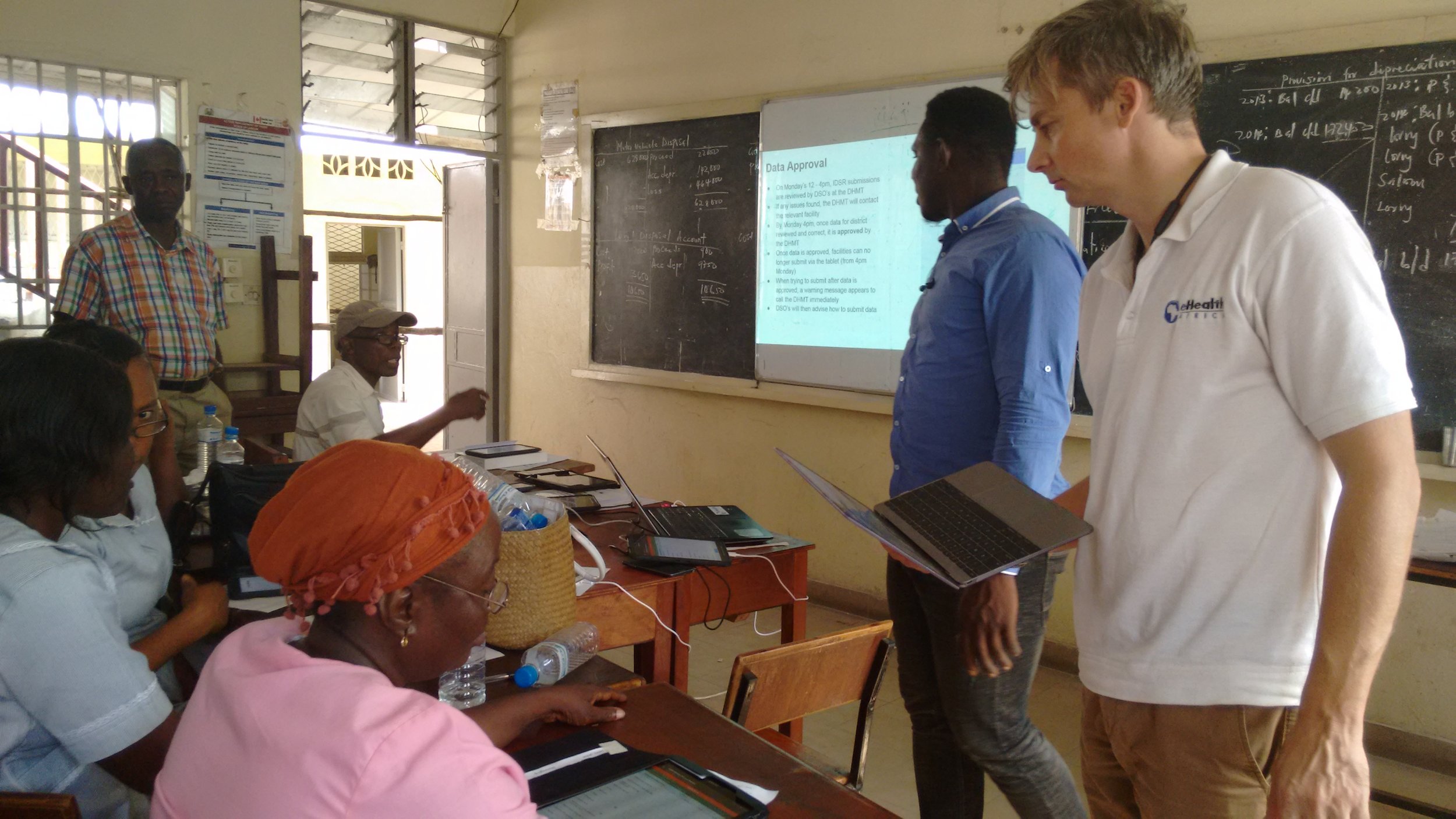By Sahr Ngaujah
In a continued effort to increase the capacity of Sierra Leone’s health systems, eHealth Africa (eHA) has partnered with the U.S. Centers for Disease Control and Prevention (CDC) to support the government of Sierra Leone by increasing the early detection and reporting of government-identified priority diseases using the Electronic Integrated Disease Surveillance Response (eIDSR) framework.
eHA developed a mobile electronic Integrated Disease Surveillance and Response (eIDSR) application in response to requirements stipulated by the Sierra Leone Ministry of Health and Sanitation (MoHS). This eIDSR app enables the MoHS Surveillance system to accurately record and share health facility-level information from the district to the national level. From health workers in hard-to-reach rural areas up to health officials in the major urban centers, eIDSR connects the health system to generate a clear and accurate picture of the health landscape.
In the first quarter of 2018, eHA introduced two new features to the eIDSR app; data approval and sms compression. These new features align with Joint External Evaluation (JEE) as stipulated by the International Health Regulations (2005).) Since June 2007, countries—including Sierra Leone, have been making efforts to strengthen their core capacities.
Prior to the introduction of the electronic data processing system, Sierra Leone’s Integrated Disease Surveillance and Response (IDSR) system relied on a paper based process where the disease surveillance data summary was compiled in a spreadsheet and then mailed to appropriate authority every Monday. This manual system helped to monitor diseases in Sierra Leone. However the time constraints reduced efficiency. The paper-based method was also prone to human error, resulting in questionable credibility and completeness of information.
“Before the introduction of eIDSR, most National health information from the Primary Health Care Unit were written hard copy. It took a lot of time for data staff to capture written hard copy data into the soft health management system. Data processing with the paper based system was time consuming and error prone. Transitioning to eIDSR would improve the quality and timeliness of health information.”
One new feature implemented in the eIDSR app is data approval. In the past, health care workers who were responsible for submitting necessary reports and data would enter the data and there was no opportunity for superiors perform data quality assurance. This sometimes resulted in erroneous data being sent to the national level, reducing the quality of data used for disease surveillance in Sierra Leone.
The new data approval feature now prompts the district staff to review and validate all data received from the health facilities before it is seen by other users. eHA also provides daily monitoring of the approval process and quickly resolves any challenges that may arise.
With this new feature in place and the support provided, the quality of data used for disease surveillance is improved significantly and human errors are minimized.
Training health care workers on the new features in the eIDSR app in Freetown, Sierra Leone
One of the biggest challenges experienced during the roll out of eIDSR was internet connectivity. There are many facilities that do not have internet access to upload their data on site. The initial solution to that challenge was to provide an alternative for the facilities to upload their data into the national server; that alternative was using Short Message Service (sms) to submit their data.
In the first version of the eIDSR application, seven (7) SMSs were required to upload the eIDSR weekly reporting form by SMS. With this sms compression upgrade the number is now reduced to one. The introduction of SMS compression has resulted in facility staff saving time needed to find locations in the community where they can have internet access or strong network connection for 7 SMS submissions. It also cuts down on costs as less SMSs are needed to complete the upload into the national server. Through the sms compression, health facility staff are not likely to leave their facilities to upload their data. The few that might have to leave will not likely have to walk long distances to have their data uploaded.
“eIDSR has built the capacities of our health workers most of whom had little experience in the use of smartphones. eIDSR has contributed to improving our interaction with our facility staff.”
eHA has now trained 142 health care workers at the Western Area Urban District Health Management Team (DHMT) in Freetown, Sierra Leone. This training of trainers session was aimed at cascading the new upgrade to other health workers. These two new features in the eIDSR application are adding immediate value to Sierra Leone’s health systems, by simply automating work.These are best practices for future generations to uphold and retain.

